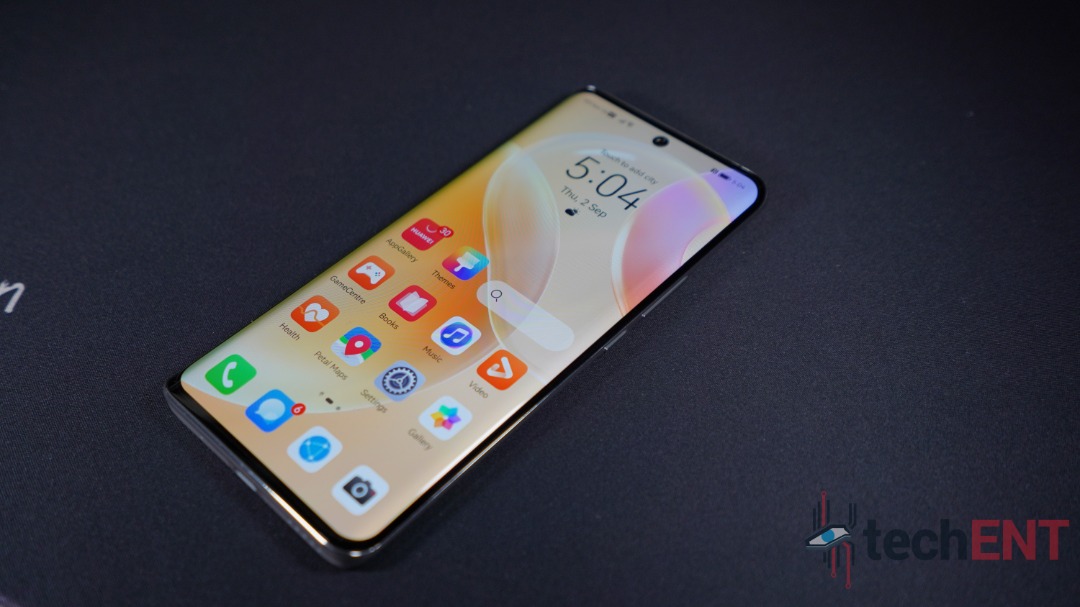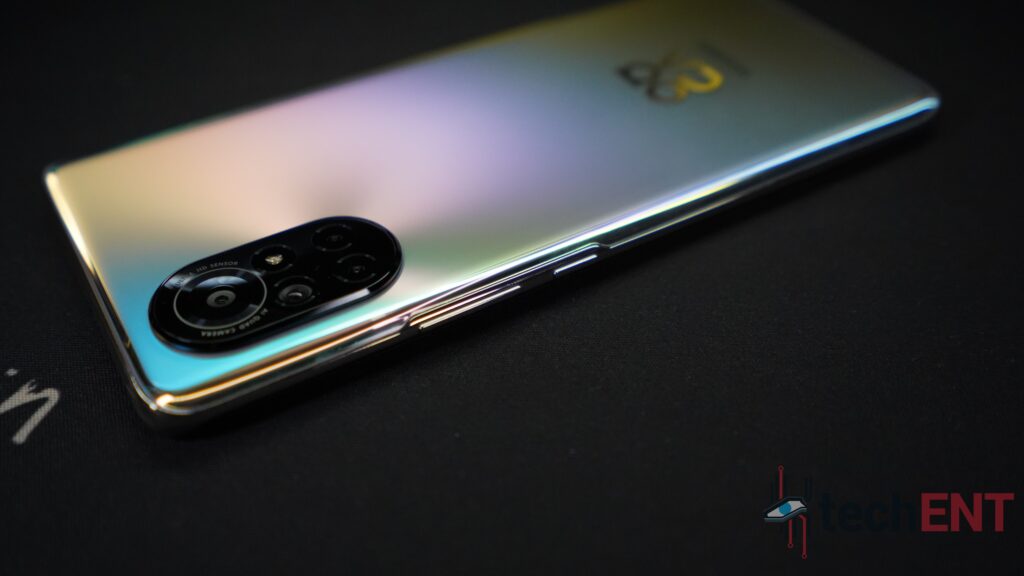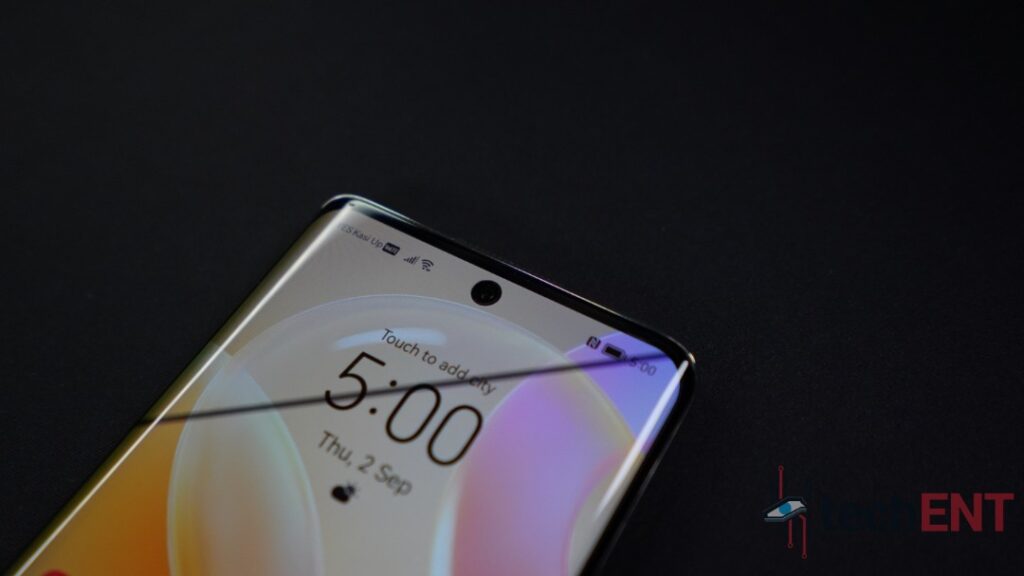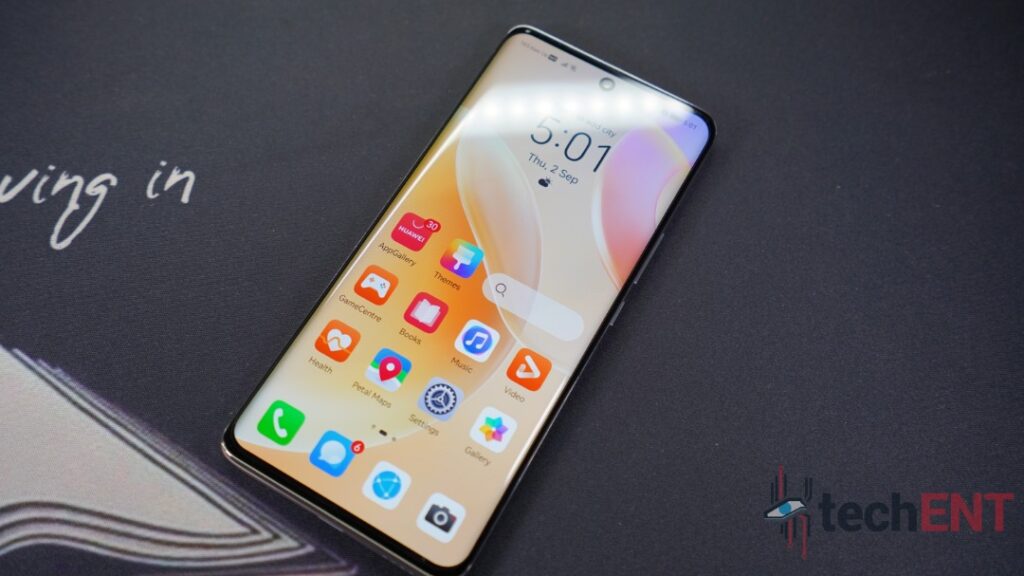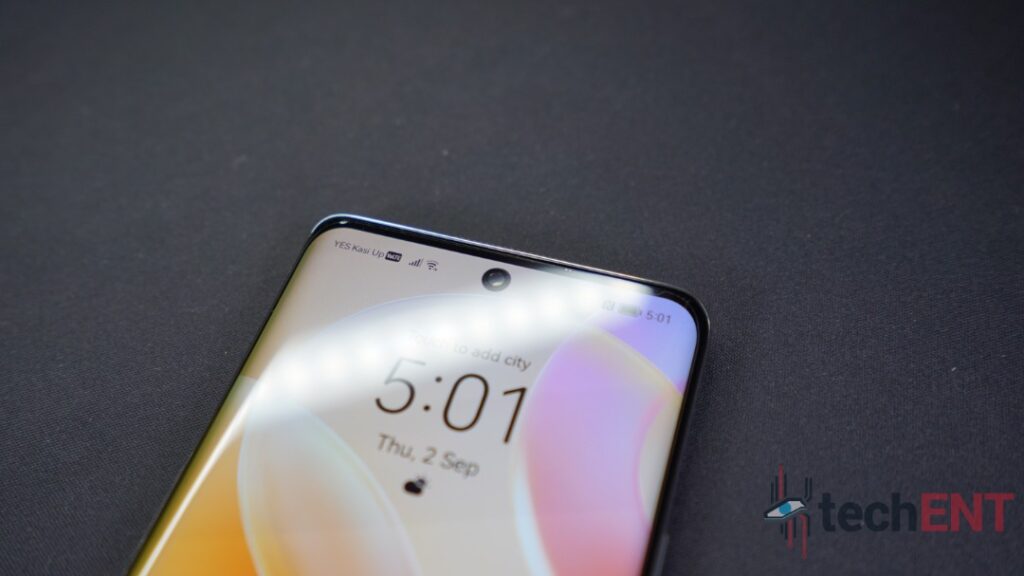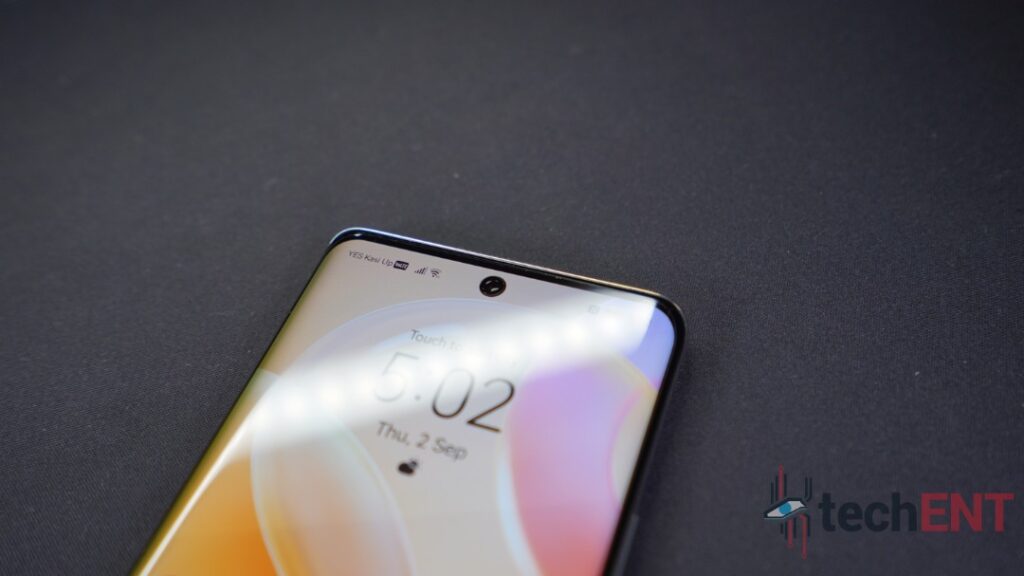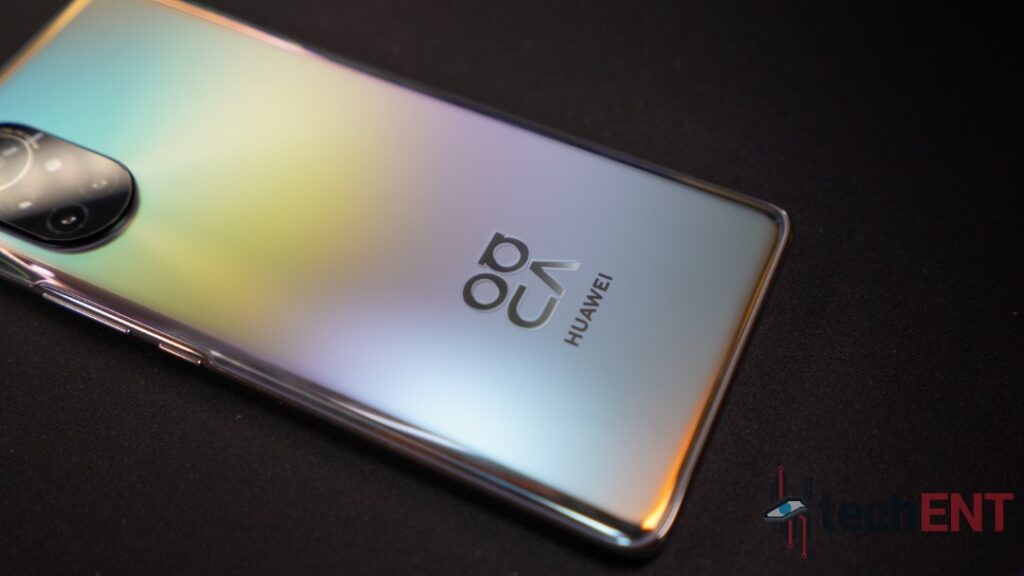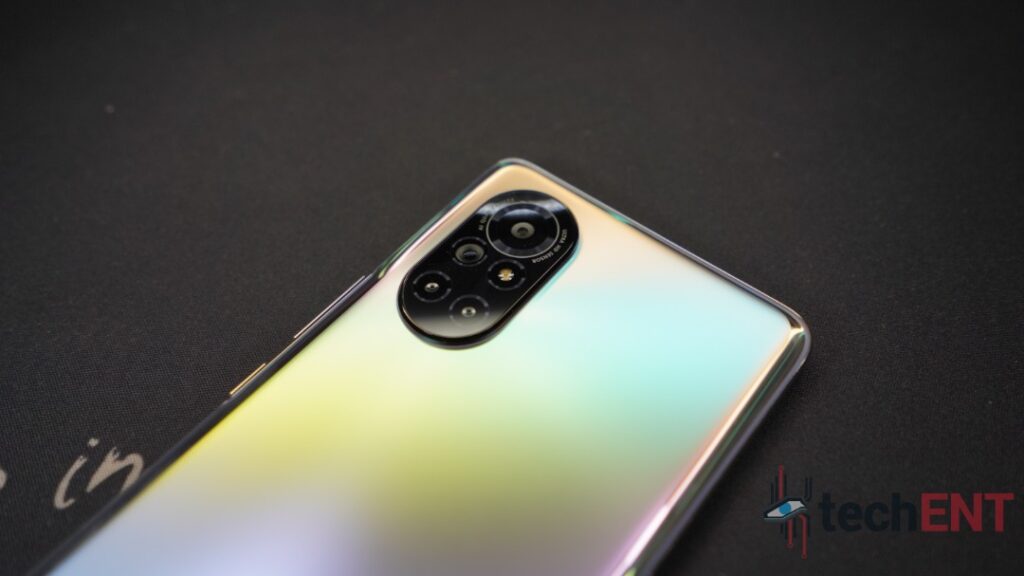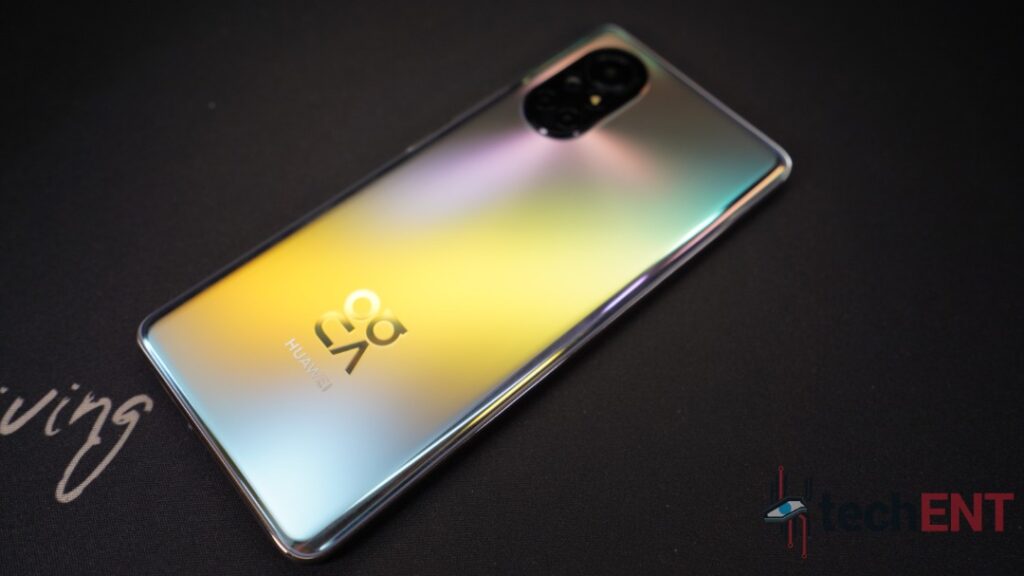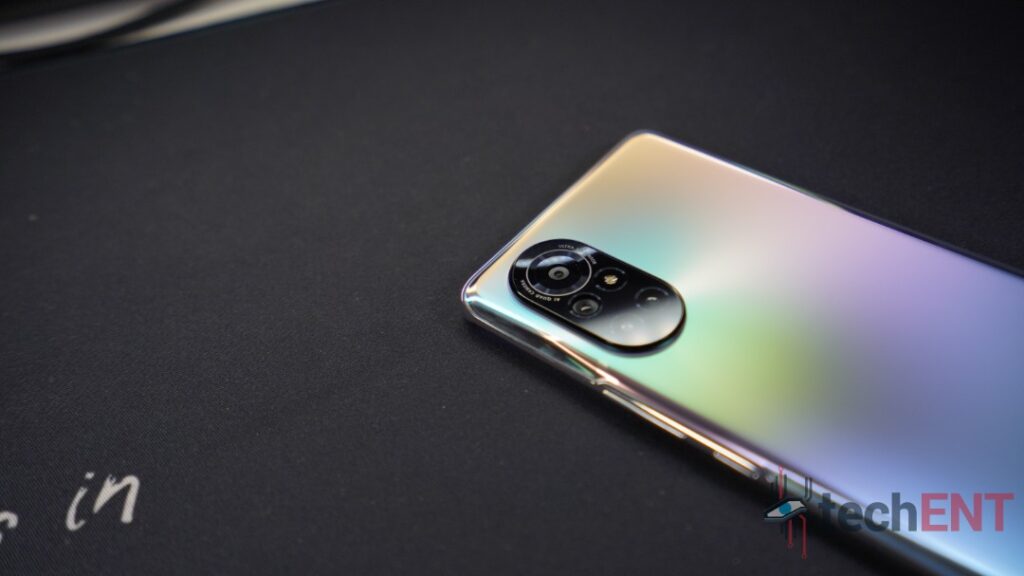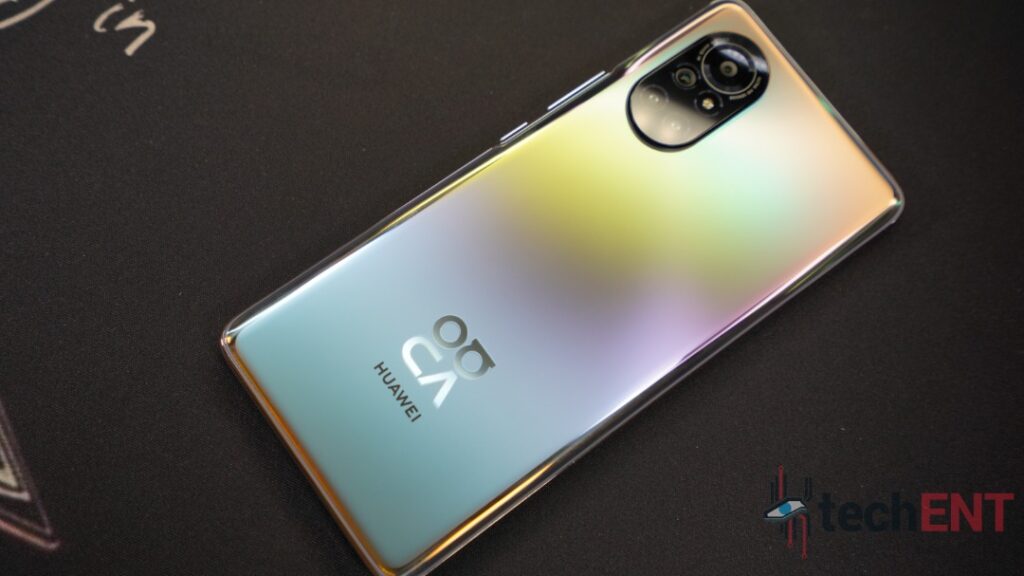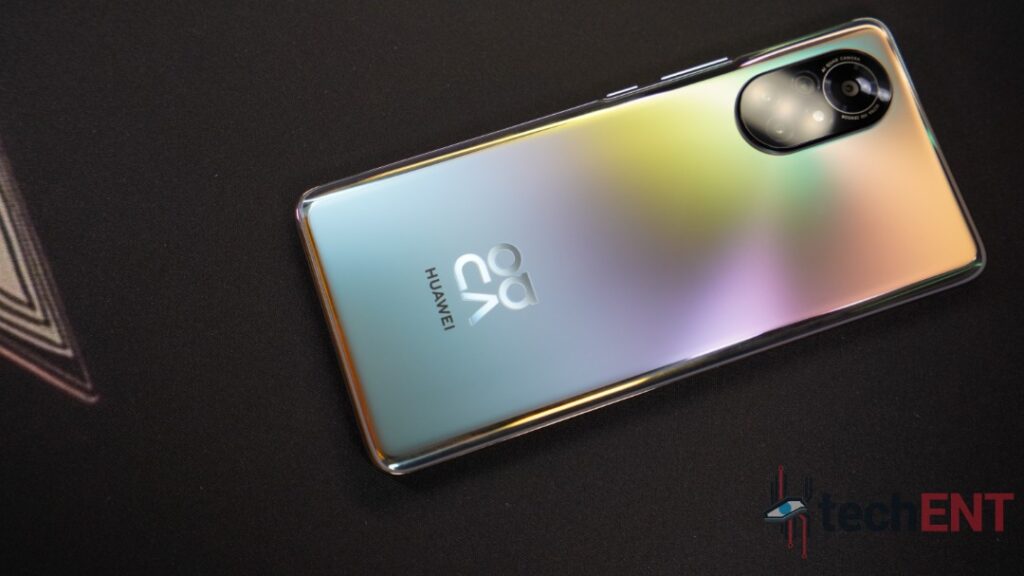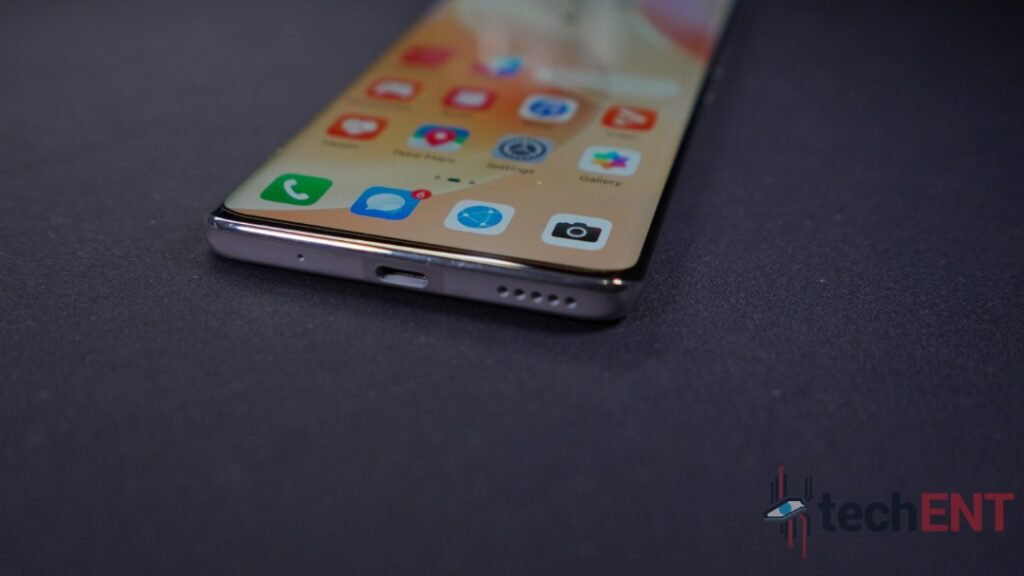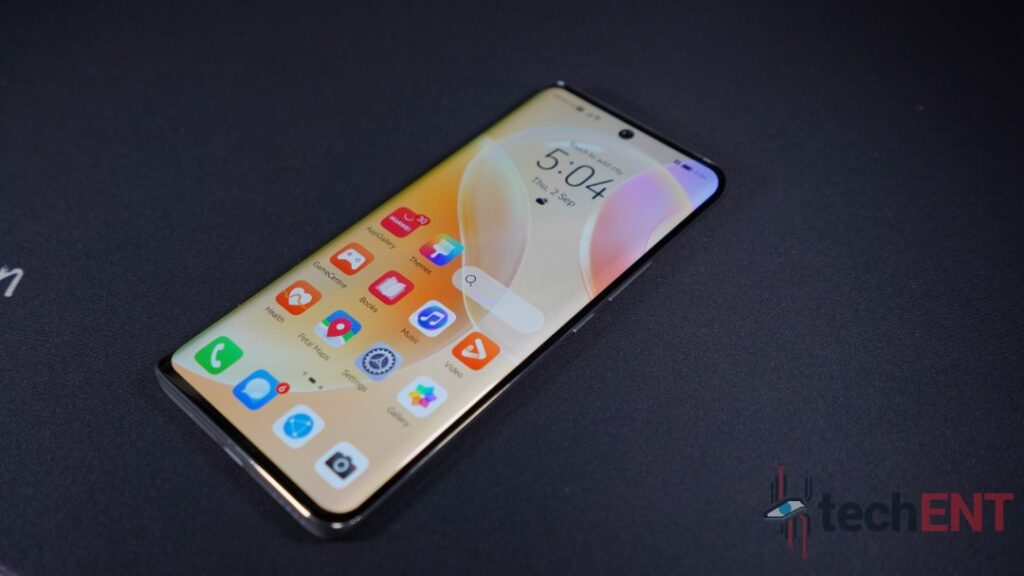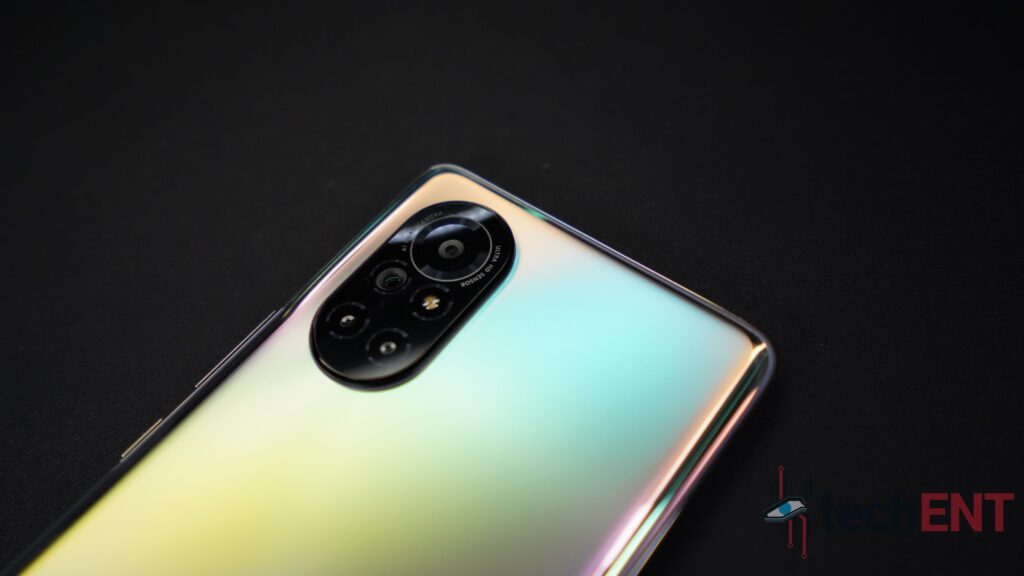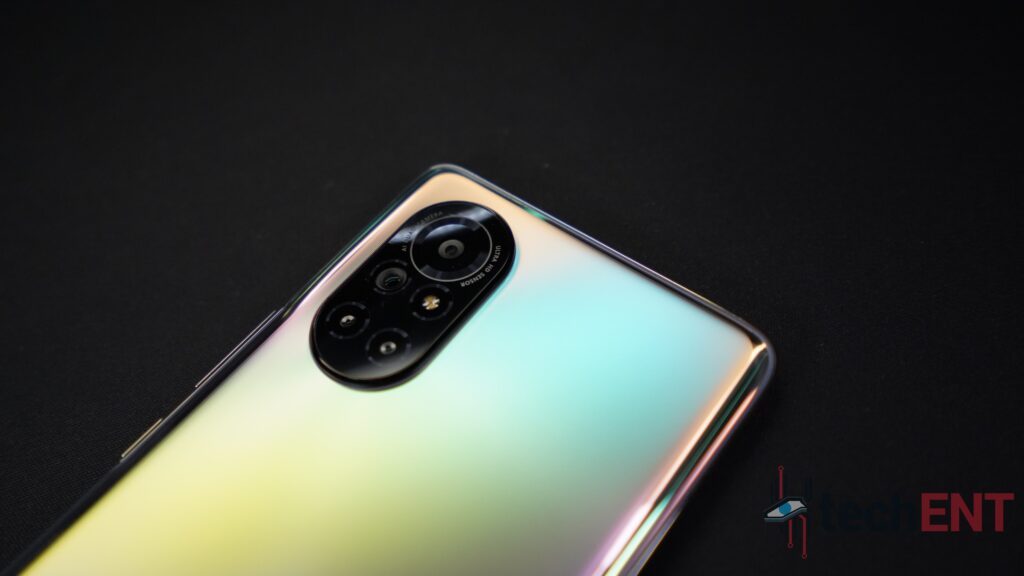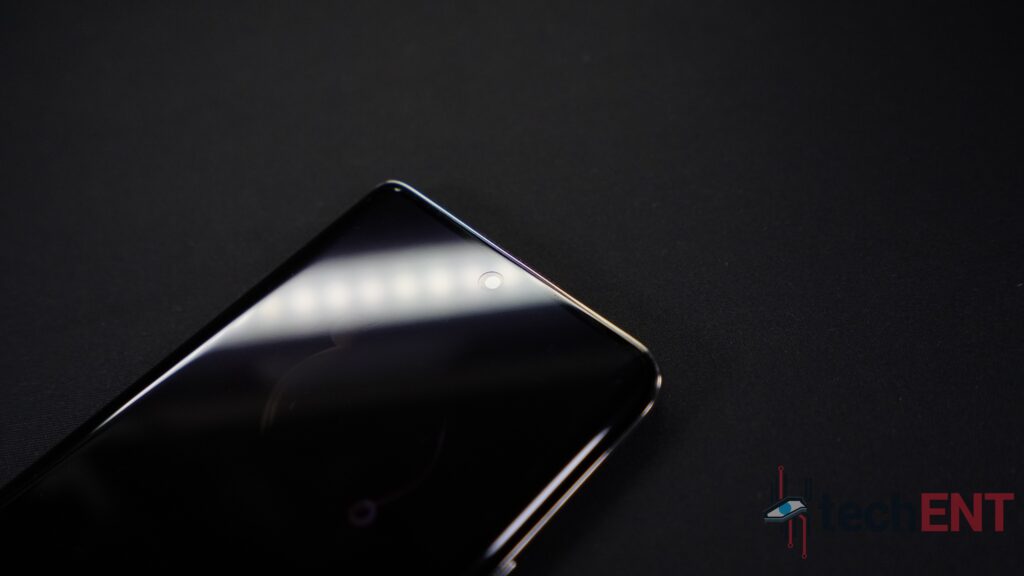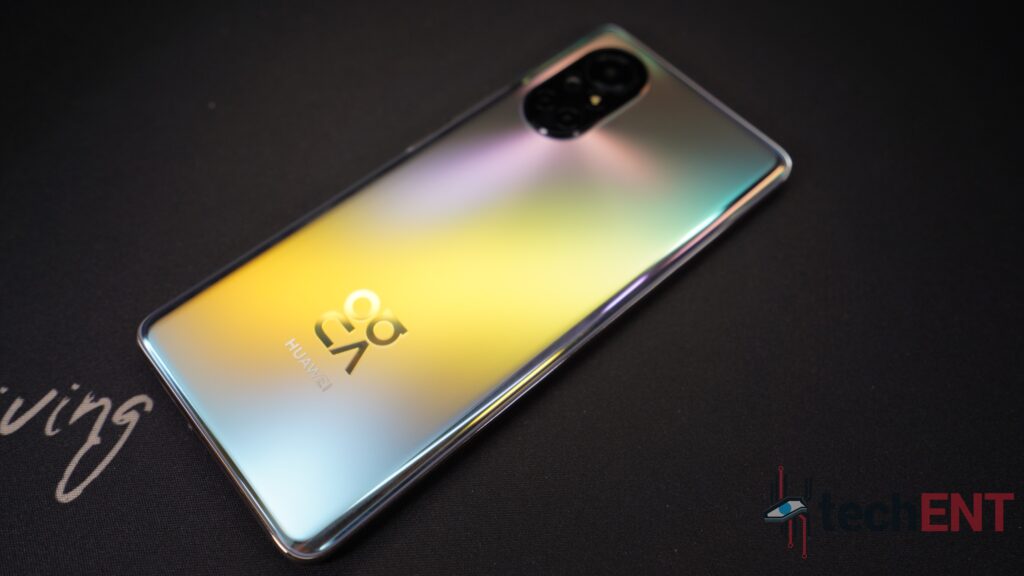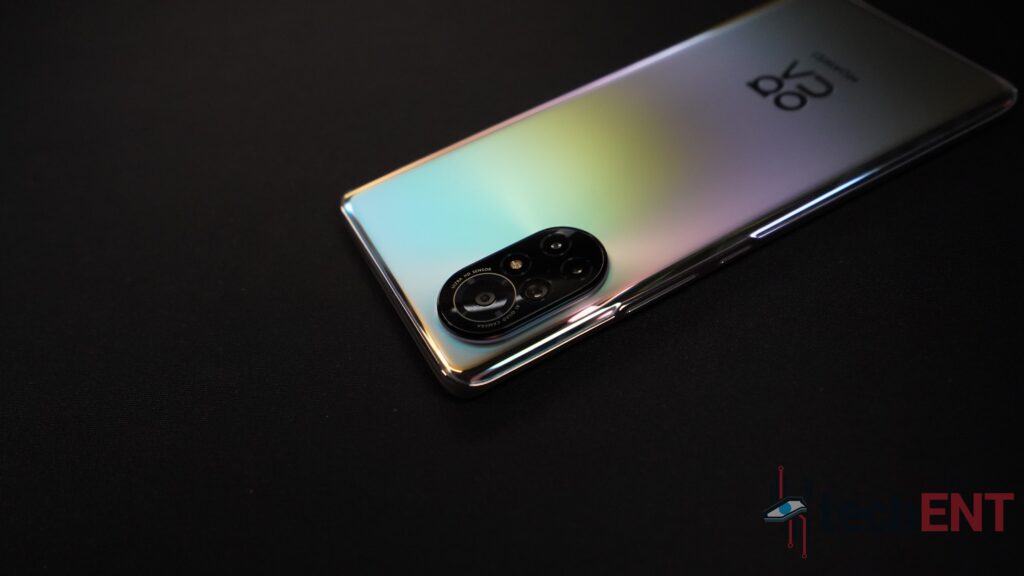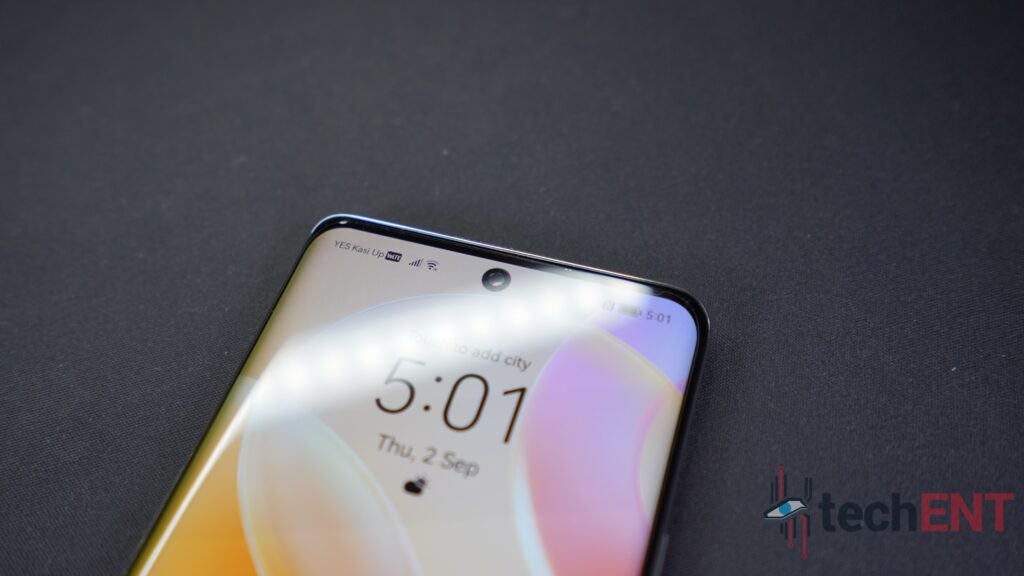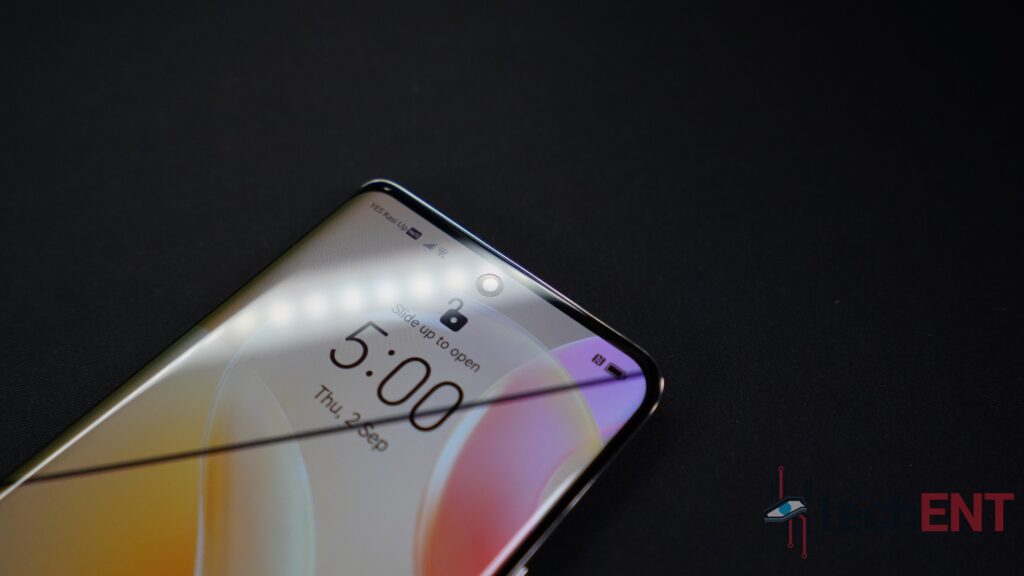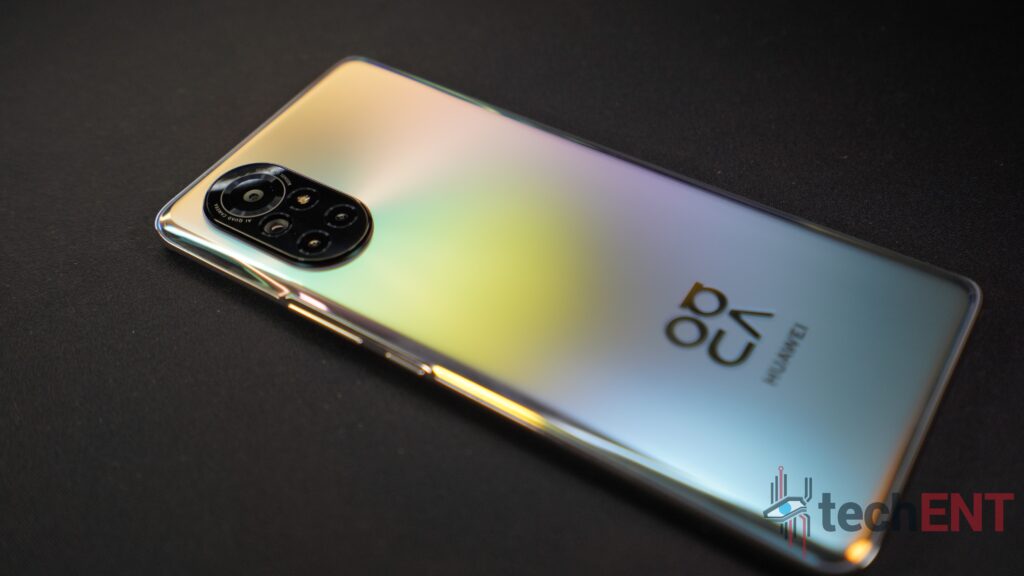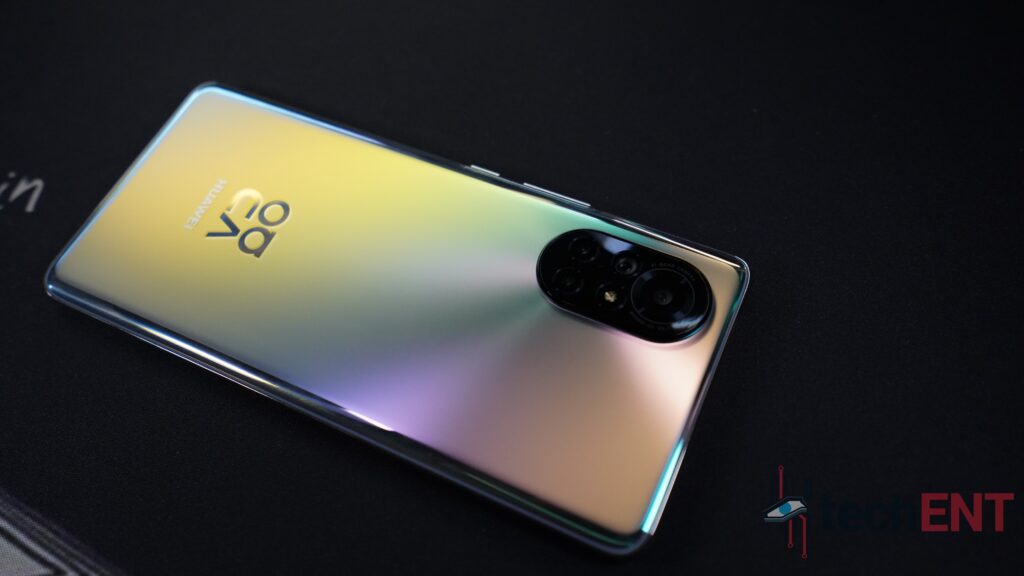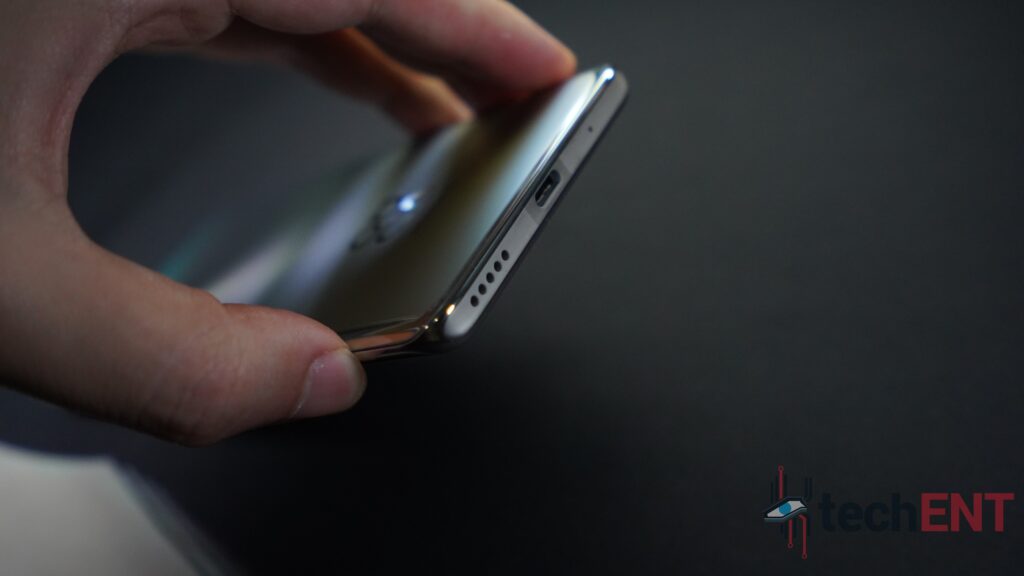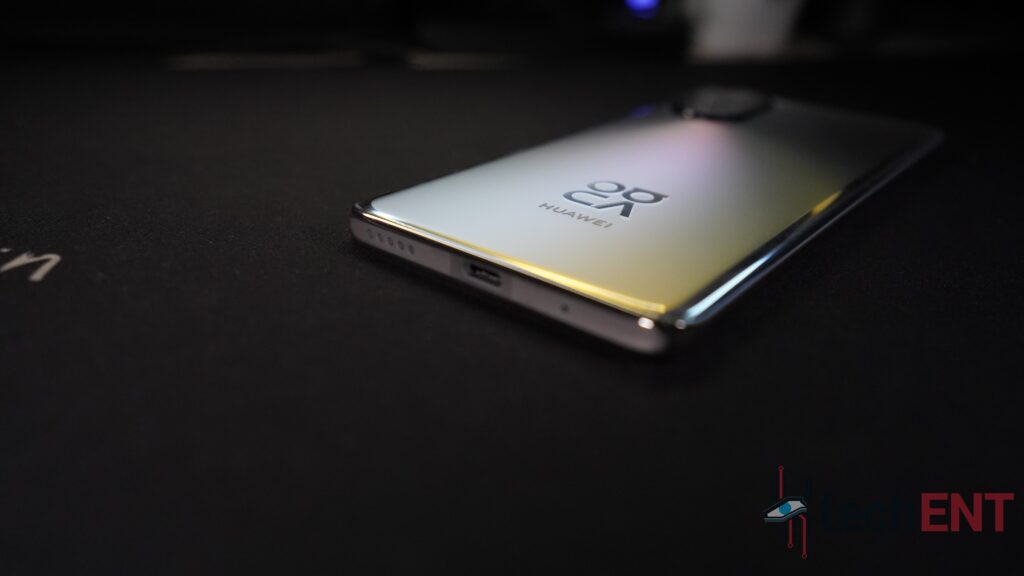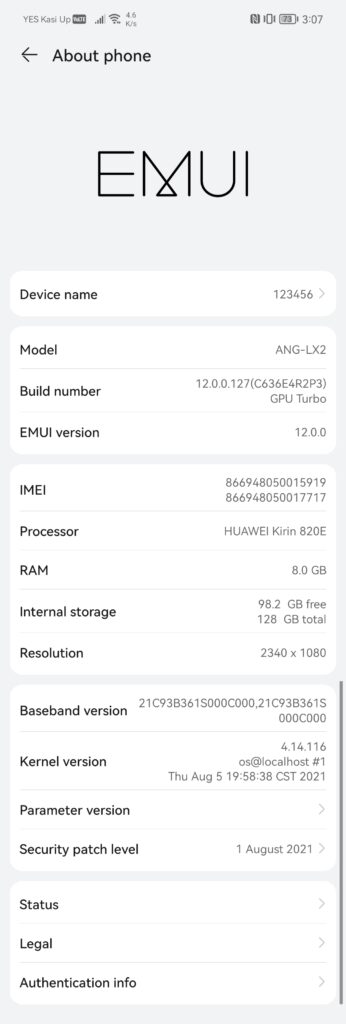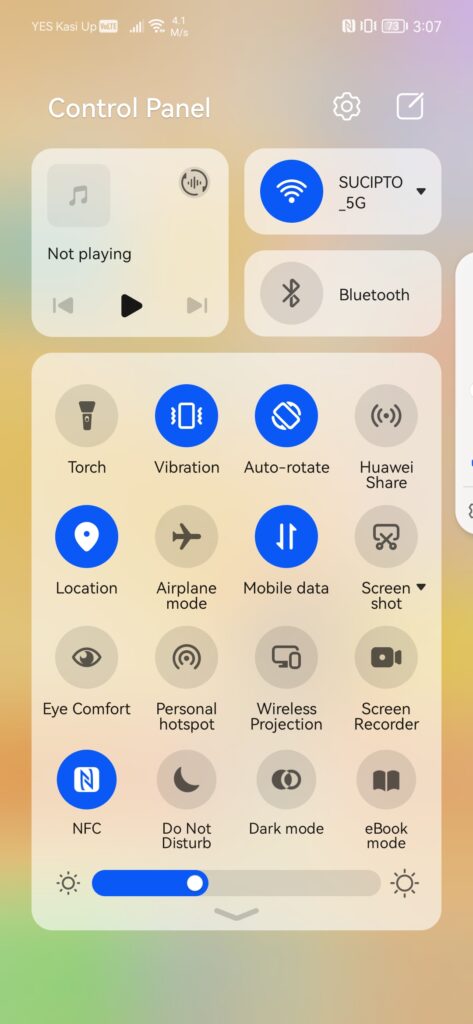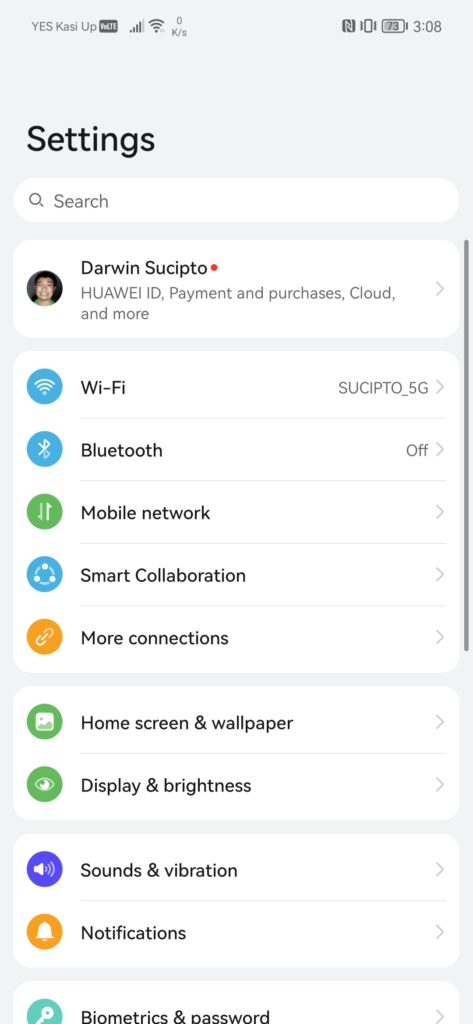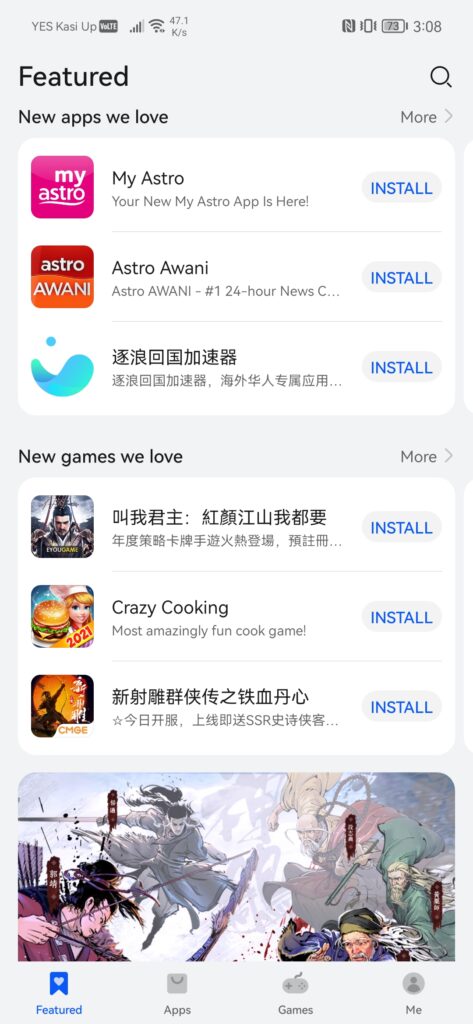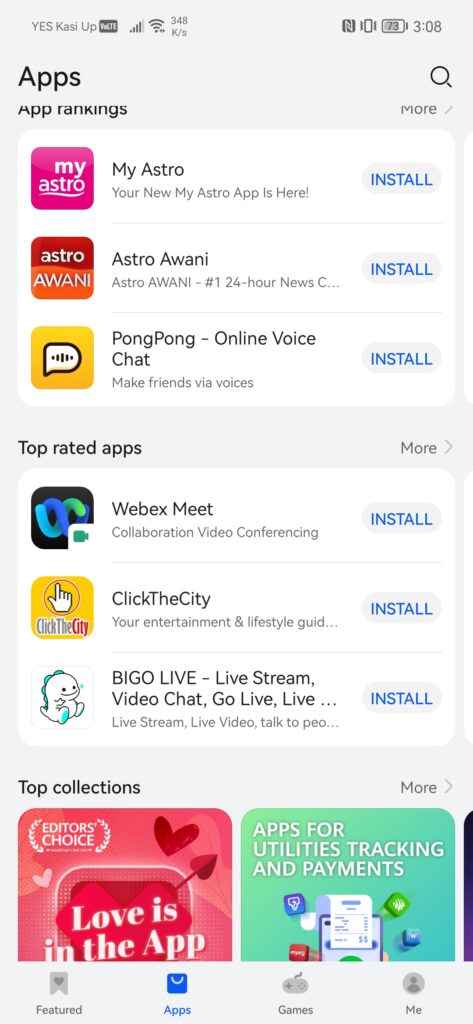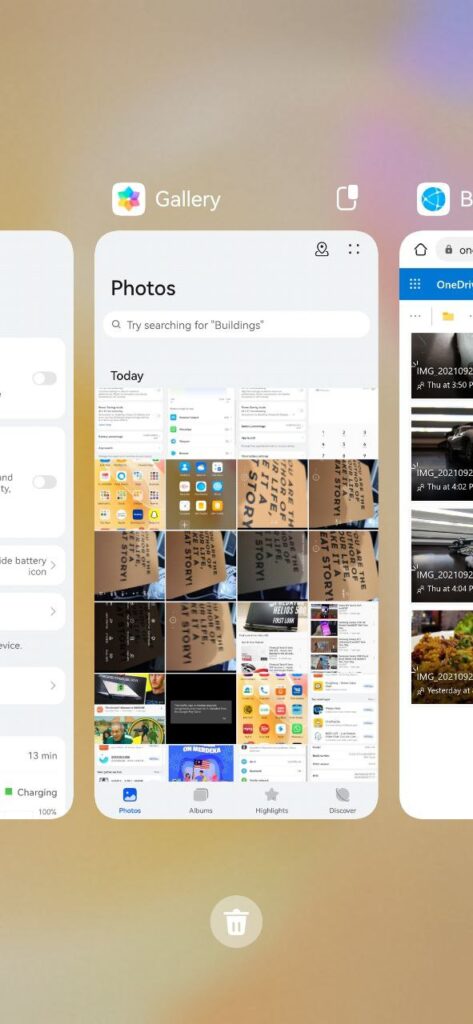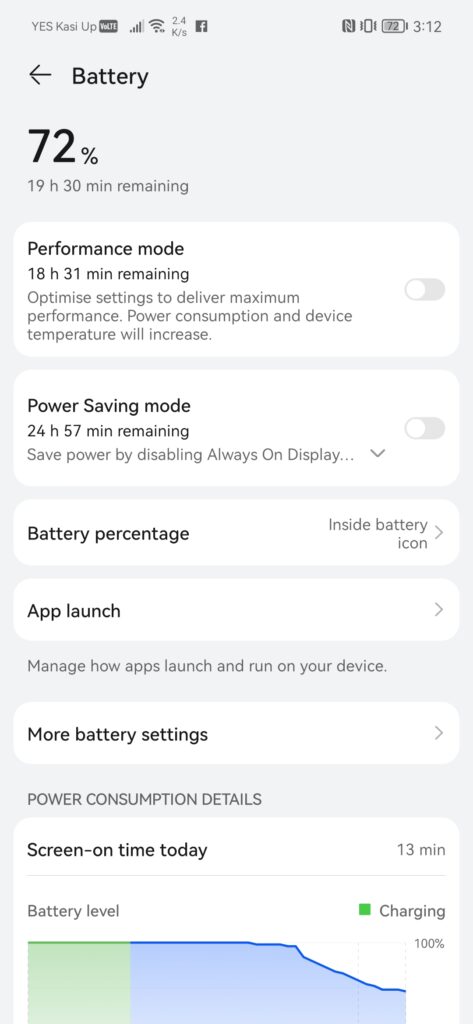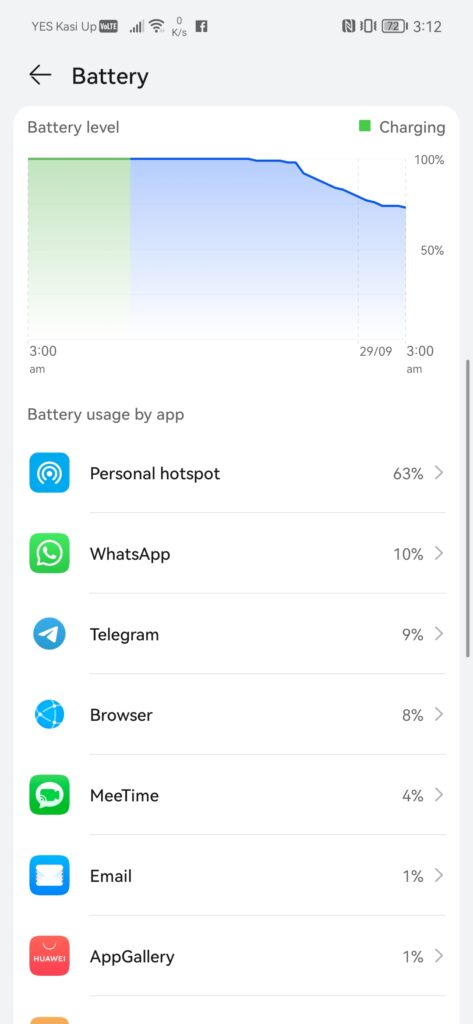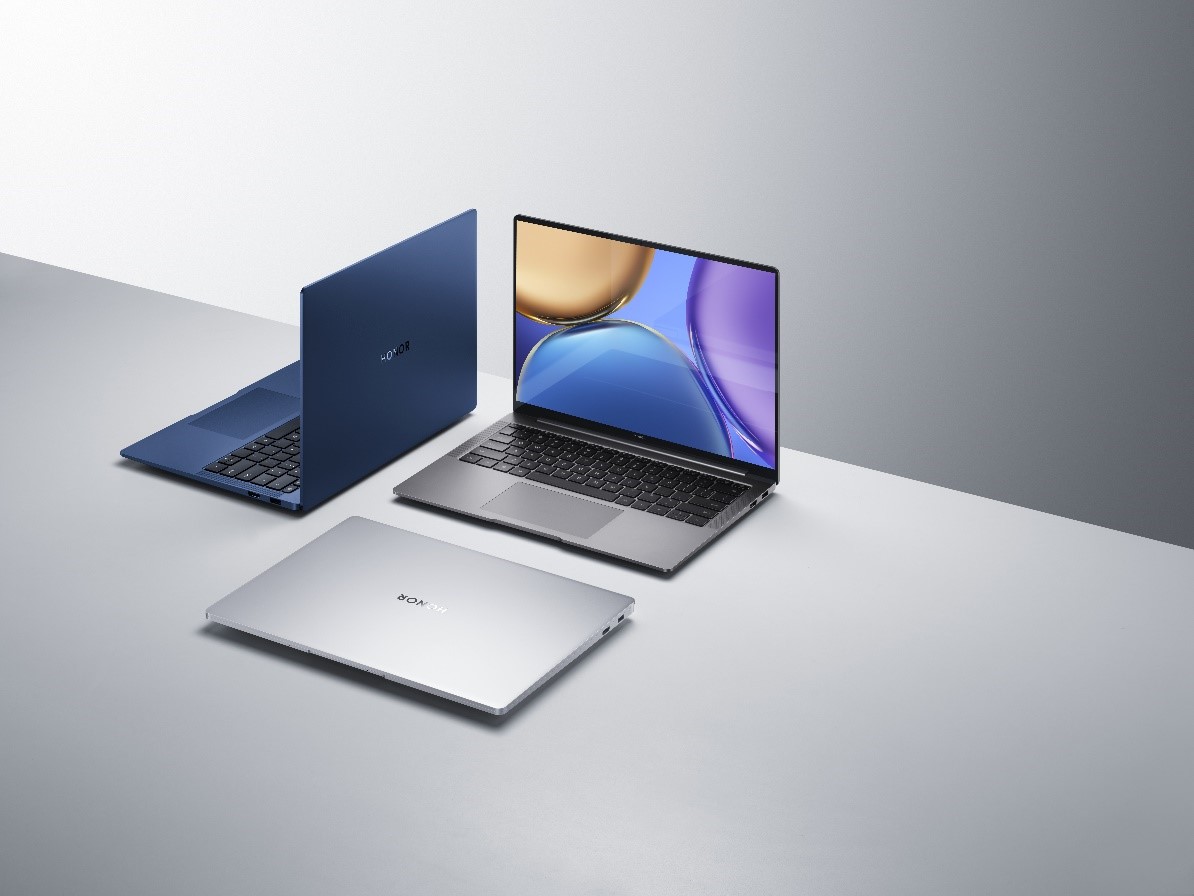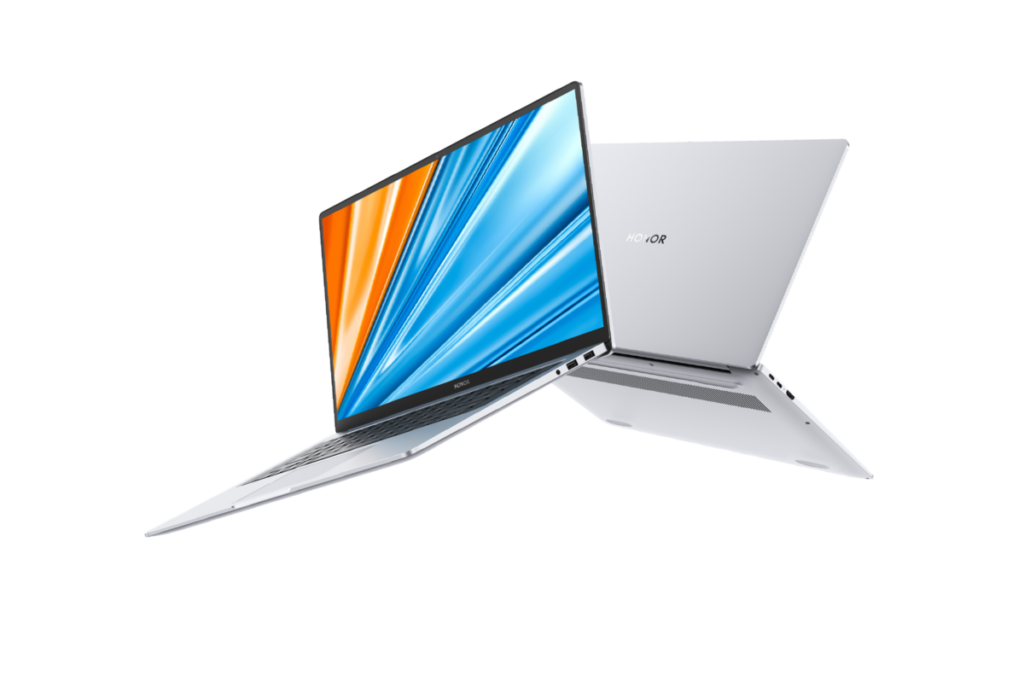Second quarter active students increased by 35.7% year-over-year
Second quarter revenue increased by 17.5% year-over-year
BEIJING, Sept. 28, 2021 — China Online Education Group ("51Talk" or the "Company") (NYSE: COE), a leading online education platform in China, with core expertise in English education, announced its unaudited financial results for the second quarter ended June 30, 2021.
Second Quarter 2021 Financial and Operating Metrics
- Net revenues were RMB579.8 million (US$89.8 million), a 17.5% increase from RMB493.5 million for the second quarter of 2020.
- Gross margin was 72.7%, compared with 70.9% for the second quarter of 2020.
- Net loss was RMB27.0 million (US$4.2 million), compared with net income of RMB32.8 million for the second quarter of 2020.
- Non-GAAP net loss[1] was RMB17.8 million (US$2.8 million), compared with non-GAAP net income of RMB39.6 million for the second quarter of 2020.
- Operating cash outflow was RMB69.7 million (US$10.8 million), compared with RMB172.1 million of operating cash inflow for the second quarter of 2020.
- Cash, cash equivalents, time deposits and short-term investments balance stood at RMB1,642.8 million (US$254.4 million) as of June 30, 2021.
- Gross billings[2] were RMB549.9 million (US$85.2 million), an 18.7% decrease from RMB676.4 million for the second quarter of 2020.
|
Key Financial and Operating Data
|
For the three months ended
|
|
|
|
Jun. 30,
|
|
Jun. 30,
|
|
Y-o-Y
|
|
2020
|
|
2021
|
|
Change
|
|
|
|
|
|
|
|
Net Revenues (in RMB millions)
|
493.5
|
|
579.8
|
|
17.5%
|
|
K-12 one-on-one mass market offering
|
417.9
|
|
534.6
|
|
27.9%
|
|
K-12 small class offering
|
28.5
|
|
16.8
|
|
(41.1%)
|
|
Others
|
47.1
|
|
28.4
|
|
(39.7%)
|
|
|
|
|
|
|
|
Gross billings (in RMB millions)
|
676.4
|
|
549.9
|
|
(18.7%)
|
|
K-12 one-on-one mass market offering
|
612.5
|
|
516.0
|
|
(15.8%)
|
|
K-12 small class offering
|
42.4
|
|
17.4
|
|
(59.0%)
|
|
Others
|
21.5
|
|
16.5
|
|
(23.3%)
|
|
|
|
|
|
|
|
Active students[3] (in thousands)
|
298.2
|
|
404.7
|
|
35.7%
|
|
|
|
|
|
|
|
[1] For more information on non-GAAP financial measures, please see the section of "Use of Non-GAAP Financial Measures" and the table captioned "Reconciliation of Non-GAAP Measures to the Most Comparable GAAP Measures" set forth in this press release.
|
|
[2] Gross billings for a specific period, which is one of the Company’s key operating data, is defined as the total amount of cash received for the sale of course packages and services in such period, net of the total amount of refunds in such period.
|
|
[3] An "active student" for a specified period refers to a student who booked at least one paid lesson, excluding those students who only attended paid live broadcasting lessons or trial lessons.
|
"Our second quarter net revenue reached RMB579.8 million, primarily driven by a 35.7% year-over-year increase in the number of active students," said Mr. Jack Jiajia Huang, Founder, Chairman and Chief Executive Officer of 51Talk.
"On July 24, 2021, relevant Chinese authorities issued the Opinions on Further Alleviating the Burden of Homework and After-School Tutoring for Students in Compulsory Education ("the Opinion"), which contains high-level policy directives about requirements and restrictions related to online and offline after-school tutoring services. Aligned with the Opinion’s directives and requirements, 51Talk launched brand new All-round Proficiency Courses in small class format for children and teenagers led by Chinese teachers. Meanwhile, we plan to develop our overseas business by offering one-on-one classes for international K-12 and adult student users taught by foreign teachers.
"Where there are new challenges, there will also be new opportunities. In keeping with the revised framework and regulations for our industry, we will continue to innovate our course offerings and explore growth opportunities." Concluded Mr. Huang.
"We recorded a 17.5% increase of net revenue and a 20.5% increase of gross profit on a year-over-year basis," said Mr. Min Xu, Chief Financial Officer of 51Talk. "Net loss for the second quarter was RMB27.0 million, attributable mainly to higher operating expenses incurred as we spent efforts in brand building and upgrading courses offerings and services. Under the new regulations, the Company has taken actions to adapt to the latest operating environment and will take further measures to improve operating efficiency. Looking ahead, we will continue to create value for our students and teachers while conforming to all laws and regulations."
Second Quarter 2021 Financial Results
Net Revenues
Net revenues for the second quarter of 2021 were RMB579.8 million (US$89.8 million), a 17.5% increase from RMB493.5 million for the same quarter last year. The increase was primarily attributed to an increase in the number of active students, partially offset by a decrease in average revenue per active student. The number of active students in the second quarter of 2021 was 404,700, a 35.7% increase from 298,200 for the same quarter last year.
Cost of Revenues
Cost of revenues for the second quarter of 2021 was RMB158.1 million (US$24.5 million), a 10.2% increase from RMB143.6 million for the same quarter last year. The increase was primarily driven by an increase in total service fees paid to teachers, mainly due to an increased number of paid lessons.
Gross Profit and Gross Margin
Gross profit for the second quarter of 2021 was RMB421.6 million (US$65.3 million), a 20.5% increase from RMB349.9 million for the same quarter last year.
Gross margin for the second quarter of 2021 was 72.7%, compared with 70.9% for the same quarter last year. The increase was mainly attributable to the decrease of the cost per lesson, partially offset by the decrease of the revenue per lesson.
Operating Expenses
Total operating expenses for the second quarter of 2021 were RMB461.0 million (US$71.4 million), a 38.7% increase from RMB332.4 million for the same quarter last year. The increase was mainly due to an increase in sales and marketing expenses.
Sales and marketing expenses for the second quarter of 2021 were RMB315.8 million (US$48.9 million), a 31.7% increase from RMB239.9 million for the same quarter last year. The increase was mainly due to higher sales personnel costs related to increases in both the number of personnel and average salary and higher marketing and branding expenses. Excluding share-based compensation expenses, non-GAAP sales and marketing expenses for the second quarter of 2021 were RMB313.4 million (US$48.5 million), a 32.0% increase from RMB237.4 million for the same quarter last year.
Product development expenses for the second quarter of 2021 were RMB65.0 million (US$10.1 million), a 68.4% increase from RMB38.6 million for the same quarter last year. The increase was primarily due to higher product development personnel costs related to increases in the number of personnel. Excluding share-based compensation expenses, non-GAAP product development expenses for the second quarter of 2021 were RMB63.4 million (US$9.8 million), a 71.5% increase from RMB37.0 million for the same quarter last year.
General and administrative expenses for the second quarter of 2021 were RMB80.2 million (US$12.4 million), a 48.7% increase from RMB53.9 million for the same quarter last year. The increase was primarily due to higher general and administrative personnel costs related to increases in both the number of personnel and average salary. Excluding share-based compensation expenses, non-GAAP general and administrative expenses for the second quarter of 2021 were RMB75.0 million (US$11.6 million), a 46.6% increase from RMB51.1 million for the same quarter last year.
Other income
The exemption for the value added tax (VAT) of consumer services has been stopped as of March 31, 2021. This exemption, which covers a wide range of consumer services, was part of the Chinese government’s effort to ease the burden of businesses affected by the COVID-19 pandemic. The income obtained by taxpayers from providing essential services shall be exempted from VAT. The favorable impact of such COVID-19 relief policies was nil and RMB7.0 million in the second quarter of 2021 and 2020 respectively.
On September 30, 2019, the Ministry of Finance and the State Taxation Administration announced that from October 1, 2019 to December 31, 2021, taxpayers engaging in the provision of essential services are allowed to deduct an extra 15% of the deductible input value-added tax for the current period from the payable value-added tax. The impact of the policy of additional value-added tax credit for the income generated by the essential services provided by enterprises was RMB5.6 million and RMB2.6 million in the second quarter of 2021 and 2020 respectively.
(Loss)/income from Operations
Operating loss for the second quarter of 2021 was RMB33.8 million (US$5.2 million), compared with operating income of RMB27.1 million for the same quarter last year. Operating margin for the second quarter was negative 5.8%, compared with operating margin of 5.5% for the same quarter last year.
Non-GAAP operating loss for the second quarter of 2021 was RMB24.5 million (US$3.8 million), compared with non-GAAP operating income of RMB34.0 million for the same quarter last year. Non-GAAP operating margin for the second quarter was negative 4.2%, compared with non-GAAP operating margin of 6.9% for the same quarter last year.
Net (loss)/income
Net loss for the second quarter of 2021 was RMB27.0 million (US$4.2 million), compared with net income of RMB32.8 million for the same quarter last year. Net margin for the second quarter was negative 4.7%, compared with net margin of 6.6% for the same quarter last year.
Non-GAAP net loss for the second quarter of 2021 was RMB17.8 million (US$2.8 million), compared with non-GAAP net income of RMB39.6 million for the same quarter last year. Non-GAAP net margin for the second quarter was negative 3.1%, compared with non-GAAP net margin of 8.0% for the same quarter last year.
Income tax expense for the second quarter of 2021 was RMB2.9 million.
Basic net loss per share attributable to ordinary shareholders for the second quarter of 2021 was RMB0.08 (US$0.01), compared with basic net income per share of RMB0.10 for the same quarter last year. Diluted net loss per share attributable to ordinary shareholders for the second quarter of 2021 was RMB0.08 (US$0.01), compared with diluted net income per share of RMB0.10 for the same quarter last year.
Non-GAAP basic net loss per share attributable to ordinary shareholders for the second quarter of 2021 was RMB0.05 (US$0.01), compared with non-GAAP basic net income per share attributable to ordinary shareholders of RMB0.12 for the same quarter last year. Non-GAAP diluted net loss per share attributable to ordinary shareholders for the second quarter of 2021 was RMB0.05 (US$0.01), compared with non-GAAP diluted net income per share attributable to ordinary shareholders of RMB0.12 for the same quarter last year.
Basic and diluted net loss per American depositary share ("ADS") attributable to ordinary shareholders for the second quarter of 2021 was RMB1.24 (US$0.19), compared with basic net income per ADS of RMB1.55 and diluted net income per ADS of RMB1.44 for the same quarter last year. Each ADS represents 15 Class A ordinary shares.
Non-GAAP basic and diluted net loss per ADS attributable to ordinary shareholders for the second quarter of 2021 was RMB0.82 (US$0.13), compared with non-GAAP basic net income per ADS attributable to ordinary shareholders of RMB1.87 and diluted net income per ADS of RMB1.75 for the same quarter last year.
Balance Sheet
As of June 30, 2021, the Company had total cash, cash equivalents, time deposits and short-term investments of RMB1,642.8 million (US$254.4 million), compared with RMB1,727.7 million as of December 31, 2020. As a part of cash, cash equivalents, time deposits and short-term investments, the Company had non-current time deposits of RMB412.0 million (US$63.8 million), compared with RMB414.0 million as of December 31, 2020.
As of June 30, 2021, the Company has a consolidated net current liability of RMB1,440.4 million, compared with net current liability of RMB1,400.4 million as of December 31, 2020. The Company had advances from students[4] (current and non-current) of RMB2,695.0 million (US$417.4 million) as of June 30, 2021, compared with RMB2,721.0 million as of December 31, 2020.
|
[4] "Advances from students," which is defined as the amount of obligation to transfer good or service to students or business partners for which consideration has been received from students in advance. The deposits from students are also presented in the total amount of "advances from students".
|
Subsequent Events
Based on the management’s assessments, as a result of the changing regulatory environment and the business adjustment plan taken by the Company, impairment of long-lived assets and reversal of interest income recognized for time deposit are expected to be recognized in subsequent period.
Outlook
For the third quarter of 2021, the Company currently expects net revenues to be between RMB550.0 million and RMB555.0 million, which would represent an increase of approximately 2.1% to 3.1% from RMB538.5 million for the same quarter last year.
The above outlook is based on current market conditions and reflects the Company’s current and preliminary estimates of market and operating conditions and customer demand, which are all subject to change.
In addition, the Company’s future operational and financial performance depends on the future development of the implementation of the Opinion and the success of the Company’s business adjustment plans, which is subject to inherent uncertainties at this time.
Conference Call
The Company’s management will host an earnings conference call at 8:00 AM U.S. Eastern Time on September 28, 2021 (8:00 PM Beijing/Hong Kong time on September 28, 2021).
Dial-in details for the earnings conference call are as follows:
|
United States (toll free):
|
1-888-394-8218
|
|
International:
|
1-323-701-0225
|
|
Mainland China:
|
400-120-9101
|
|
Hong Kong (toll free):
|
800-961-105
|
|
Hong Kong:
|
852-3008-1527
|
Participants should dial-in at least 5 minutes before the scheduled start time and ask to be connected to the call for "China Online Education Group."
Additionally, a live and archived webcast of the conference call will be available on the Company’s investor relations website at http://ir.51talk.com.
A replay of the conference call will be accessible until September 28, 2021, by dialing the following telephone numbers:
|
United States (toll free):
|
1-888-203-1112
|
|
International:
|
1-719-457-0820
|
|
Replay Access Code:
|
6658686
|
About China Online Education Group
China Online Education Group (NYSE: COE) is a leading online education platform in China, with core expertise in English education. The Company’s mission is to make quality education accessible and affordable. The Company’s online and mobile education platforms enable students across China to take live interactive English lessons with overseas foreign teachers, on demand. The Company connects its students with a large pool of highly qualified foreign teachers that it assembled using a shared economy approach, and employs student and teacher feedback and data analytics to deliver a personalized learning experience to its students.
Use of Non-GAAP Financial Measures
In evaluating its business, 51Talk considers and uses the following measures defined as non-GAAP financial measures by the SEC as supplemental metrics to review and assess its operating performance: non-GAAP sales and marketing expenses, non-GAAP product development expenses, non-GAAP general and administrative expenses, non-GAAP operating expenses, non-GAAP operating income/(loss), non-GAAP net income/(loss), non-GAAP net income/(loss) attributable to ordinary shareholders, and non-GAAP net income/(loss) attributable to ordinary shareholders per share and per ADS. To present each of these non-GAAP measures, the Company excludes share-based compensation expenses. The presentation of these non-GAAP financial measures is not intended to be considered in isolation or as a substitute for the financial information prepared and presented in accordance with GAAP. For more information on these non-GAAP financial measures, please see the table captioned "Reconciliations of non-GAAP measures to the most comparable GAAP measures" set forth at the end of this press release.
51Talk believes that these non-GAAP financial measures provide meaningful supplemental information regarding its performance by excluding share-based compensation expenses that may not be indicative of its operating performance from a cash perspective. 51Talk believes that both management and investors benefit from these non-GAAP financial measures in assessing its performance and when planning and forecasting future periods. These non-GAAP financial measures also facilitate management’s internal comparisons to 51Talk’s historical performance. 51Talk computes its non-GAAP financial measures using the same consistent method from quarter to quarter and from period to period. 51Talk believes these non-GAAP financial measures are useful to investors in allowing for greater transparency with respect to supplemental information used by management in its financial and operational decision-making. A limitation of using non-GAAP measures is that these non-GAAP measures exclude share-based compensation expenses that have been and will continue to be for the foreseeable future a significant recurring expense in the 51Talk’s business. Management compensates for these limitations by providing specific information regarding the GAAP amounts excluded from each non-GAAP measure. The accompanying table at the end of this press release provides more details on the reconciliations between GAAP financial measures that are most directly comparable to non-GAAP financial measures.
Exchange Rate Information
This announcement contains translations of certain RMB amounts into U.S. dollars at a specified rate solely for the convenience of the reader. Unless otherwise noted, all translations from RMB to U.S. dollars are made at a rate of RMB6.4566 to US$1.00, the rate in effect as of June 30, 2021as certified for customs purposes by the Federal Reserve Bank of New York.
Safe Harbor Statement
This press release contains statements that may constitute "forward-looking" statements pursuant to the "safe harbor" provisions of the U.S. Private Securities Litigation Reform Act of 1995. These forward-looking statements can be identified by terminology such as "will", "expects", "anticipates", "aims", "future", "intends", "plans", "believes", "estimates", "likely to" and similar statements. Among other things, 51Talk’s quotations from management in this announcement, as well as 51Talk’s strategic and operational plans, contain forward-looking statements. 51Talk may also make written or oral forward-looking statements in its periodic reports to the Securities and Exchange Commission ("SEC"), in its annual report to shareholders, in press releases and other written materials and in oral statements made by its officers, directors or employees to third parties. Statements that are not historical facts, including statements about 51Talk’s beliefs and expectations, are forward-looking statements. Forward-looking statements involve inherent risks and uncertainties. A number of factors could cause actual results to differ materially from those contained in any forward-looking statement, including but not limited to the following: 51Talk’s goals and strategies; 51Talk’s expectations regarding demand for and market acceptance of its brand and platform; 51Talk’s ability to retain and increase its student enrollment; 51Talk’s ability to offer new courses; 51Talk’s ability to engage, train and retain new teachers; 51Talk’s future business development, results of operations and financial condition; 51Talk’s ability to maintain and improve infrastructure necessary to operate its education platform; competition in the online education industry in China; the expected growth of, and trends in, the markets for 51Talk’s course offerings in China; relevant government policies and regulations relating to 51Talk’s corporate structure, business and industry; general economic and business condition in China, the Philippines and elsewhere and assumptions underlying or related to any of the foregoing. Further information regarding these and other risks is included in 51Talk’s filings with the SEC. All information provided in this press release is as of the date of this press release, and 51Talk does not undertake any obligation to update any forward-looking statement, except as required under applicable law.
|
CHINA ONLINE EDUCATION GROUP
|
|
UNAUDITED CONDENSED CONSOLIDATED BALANCE SHEETS
|
|
(In thousands)
|
|
|
|
|
|
|
|
|
|
|
|
|
As of
|
|
|
|
|
Dec. 31,
|
|
Jun. 30
|
|
Jun. 30,
|
|
|
|
|
2020
|
|
2021
|
|
2021
|
|
|
|
|
RMB
|
|
RMB
|
|
US$
|
|
|
|
|
|
|
|
|
|
|
ASSETS
|
|
|
|
|
|
|
|
Current assets
|
|
|
|
|
|
|
|
|
Cash and cash equivalents
|
|
326,647
|
|
341,858
|
|
52,947
|
|
|
Time deposits
|
|
477,408
|
|
501,025
|
|
77,599
|
|
|
Short-term investments
|
|
509,636
|
|
387,886
|
|
60,076
|
|
|
Inventory
|
|
1,935
|
|
1,941
|
|
301
|
|
|
Prepaid expenses and other current assets
|
|
302,057
|
|
327,458
|
|
50,717
|
|
Total current assets
|
|
1,617,683
|
|
1,560,168
|
|
241,640
|
|
|
|
|
|
|
|
|
|
|
Non-current assets
|
|
|
|
|
|
|
|
|
Property and equipment, net
|
|
21,175
|
|
39,932
|
|
6,185
|
|
|
Intangible assets, net
|
|
20,302
|
|
34,719
|
|
5,377
|
|
|
Goodwill
|
|
4,223
|
|
10,209
|
|
1,581
|
|
|
Right-of-use assets
|
|
98,001
|
|
104,021
|
|
16,111
|
|
|
Time deposits
|
|
414,000
|
|
412,000
|
|
63,811
|
|
|
Deferred tax assets
|
|
10,268
|
|
5,300
|
|
821
|
|
|
Other non-current assets
|
|
23,896
|
|
29,730
|
|
4,605
|
|
Total non-current assets
|
|
591,865
|
|
635,911
|
|
98,491
|
|
|
|
|
|
|
|
|
|
|
Total assets
|
|
2,209,548
|
|
2,196,079
|
|
340,131
|
|
|
|
|
|
|
|
|
|
|
LIABILITIES
|
|
|
|
|
|
|
|
AND SHAREHOLDERS’ DEFICIT
|
|
|
|
Current liabilities
|
|
|
|
|
|
|
|
|
Advances from students
|
|
2,718,776
|
|
2,693,341
|
|
417,145
|
|
|
Accrued expenses and other current liabilities
|
|
237,101
|
|
232,034
|
|
35,937
|
|
|
Lease liability
|
|
42,949
|
|
52,097
|
|
8,069
|
|
|
Taxes payable
|
|
19,288
|
|
23,054
|
|
3,571
|
|
Total current liabilities
|
|
3,018,114
|
|
3,000,526
|
|
464,722
|
|
|
|
|
|
|
|
|
|
|
Non-current liabilities
|
|
|
|
|
|
|
|
|
Advances from students
|
|
2,270
|
|
1,690
|
|
262
|
|
|
Deferred tax liabilities
|
|
–
|
|
3,738
|
|
579
|
|
|
Lease liability
|
|
53,594
|
|
53,929
|
|
8,353
|
|
|
Other non-current liabilities
|
|
2,508
|
|
2,834
|
|
439
|
|
Total non-current liabilities
|
|
58,372
|
|
62,191
|
|
9,633
|
|
|
|
|
|
|
|
|
|
|
Total liabilities
|
|
3,076,486
|
|
3,062,717
|
|
474,355
|
|
|
|
|
|
|
|
|
|
Total shareholders’ deficit
|
|
(866,938)
|
|
(866,638)
|
|
(134,224)
|
|
|
|
|
|
|
|
|
|
Total liabilities and shareholders’ deficit
|
|
2,209,548
|
|
2,196,079
|
|
340,131
|
|
CHINA ONLINE EDUCATION GROUP
|
|
UNAUDITED INTERIM CONDENSED CONSOLIDATED STATEMENTS OF COMPREHENSIVE INCOME/(LOSS)
|
|
(In thousands except for number of shares and per share data)
|
|
|
|
|
|
|
|
|
|
|
|
|
|
|
|
|
For the three months ended
|
|
For the six months ended
|
|
|
Jun. 30,
|
|
Mar. 31,
|
|
Jun. 30,
|
|
Jun. 30,
|
|
Jun. 30,
|
|
Jun. 30,
|
|
Jun. 30,
|
|
|
2020
|
|
2021
|
|
2021
|
|
2021
|
|
2020
|
|
2021
|
|
2021
|
|
|
RMB
|
|
RMB
|
|
RMB
|
|
US$
|
|
RMB
|
|
RMB
|
|
US$
|
|
Net revenues
|
|
493,471
|
|
600,404
|
|
579,751
|
|
89,792
|
|
980,555
|
|
1,180,155
|
|
182,783
|
|
Cost of revenues
|
|
(143,560)
|
|
(159,713)
|
|
(158,133)
|
|
(24,492)
|
|
(287,591)
|
|
(317,846)
|
|
(49,228)
|
|
Gross profit
|
|
349,911
|
|
440,691
|
|
421,618
|
|
65,300
|
|
692,964
|
|
862,309
|
|
133,555
|
|
Operating expenses
|
|
|
|
|
|
|
|
|
|
|
|
|
|
|
|
Sales and marketing expenses
|
|
(239,894)
|
|
(318,944)
|
|
(315,832)
|
|
(48,916)
|
|
(468,281)
|
|
(634,776)
|
|
(98,314)
|
|
Product development expenses
|
|
(38,616)
|
|
(57,726)
|
|
(65,029)
|
|
(10,072)
|
|
(74,483)
|
|
(122,755)
|
|
(19,012)
|
|
General and administrative
expenses
|
|
(53,902)
|
|
(69,208)
|
|
(80,172)
|
|
(12,417)
|
|
(104,591)
|
|
(149,380)
|
|
(23,136)
|
|
Total operating expenses
|
|
(332,412)
|
|
(445,878)
|
|
(461,033)
|
|
(71,405)
|
|
(647,355)
|
|
(906,911)
|
|
(140,462)
|
|
Other income
|
|
9,628
|
|
11,094
|
|
5,615
|
|
870
|
|
26,389
|
|
16,709
|
|
2,588
|
|
Income/(loss) from operations
|
|
27,127
|
|
5,907
|
|
(33,800)
|
|
(5,235)
|
|
71,998
|
|
(27,893)
|
|
(4,319)
|
|
Interest income
|
|
8,735
|
|
11,620
|
|
10,737
|
|
1,663
|
|
16,312
|
|
22,357
|
|
3,463
|
|
Interest expenses and other
expenses, net
|
|
(1,337)
|
|
(3,408)
|
|
(1,046)
|
|
(162)
|
|
(1,546)
|
|
(4,454)
|
|
(690)
|
|
Income/(loss) before income tax
expenses
|
|
34,525
|
|
14,119
|
|
(24,109)
|
|
(3,734)
|
|
86,764
|
|
(9,990)
|
|
(1,546)
|
|
Income tax expenses
|
|
(1,759)
|
|
(6,097)
|
|
(2,907)
|
|
(450)
|
|
(3,206)
|
|
(9,004)
|
|
(1,395)
|
|
Net income/(loss), all
attributable to the Company’s
ordinary shareholders
|
|
32,766
|
|
8,022
|
|
(27,016)
|
|
(4,184)
|
|
83,558
|
|
(18,994)
|
|
(2,941)
|
|
|
|
|
|
|
|
|
|
|
|
|
|
|
|
|
Weighted average number of
ordinary shares used in
computing basic earnings/(loss)
per share
|
|
317,793,905
|
|
322,796,828
|
|
326,390,311
|
|
326,390,311
|
|
315,495,702
|
|
324,603,496
|
|
324,603,496
|
|
|
|
|
|
|
|
|
|
|
|
|
|
|
|
|
Weighted average number of
ordinary shares used in
computing diluted
earnings/(loss) per share
|
|
340,457,526
|
|
342,150,096
|
|
326,390,311
|
|
326,390,311
|
|
338,680,304
|
|
324,603,496
|
|
324,603,496
|
|
|
|
|
|
|
|
|
|
|
|
|
|
|
|
|
CHINA ONLINE EDUCATION GROUP
|
|
UNAUDITED CONDENSED CONSOLIDATED STATEMENTS OF COMPREHENSIVE INCOME/(LOSS)
|
|
(In thousands except for number of shares and per share data)
|
|
|
|
|
|
For the three months ended
|
|
For the six months ended
|
|
|
|
|
|
Jun. 30,
|
|
Mar. 31,
|
|
Jun. 30,
|
|
Jun. 30,
|
|
Jun. 30,
|
|
Jun. 30,
|
|
Jun. 30,
|
|
|
|
|
|
2020
|
|
2021
|
|
2021
|
|
2021
|
|
2020
|
|
2021
|
|
2021
|
|
|
|
|
|
RMB
|
|
RMB
|
|
RMB
|
|
US$
|
|
RMB
|
|
RMB
|
|
US$
|
|
|
|
|
|
|
|
|
|
|
|
|
|
|
|
|
|
|
|
|
|
Net earnings/(loss) per share attributable to ordinary shareholders
|
|
|
|
|
|
|
|
|
|
|
|
|
|
Basic
|
|
0.10
|
|
0.02
|
|
(0.08)
|
|
(0.01)
|
|
0.26
|
|
(0.06)
|
|
(0.01)
|
|
|
|
diluted
|
|
0.10
|
|
0.02
|
|
(0.08)
|
|
(0.01)
|
|
0.25
|
|
(0.06)
|
|
(0.01)
|
|
|
|
Net earnings/(loss) per ADS attributable to ordinary shareholders
|
|
|
|
|
|
|
|
|
|
|
|
|
|
basic
|
|
1.55
|
|
0.37
|
|
(1.24)
|
|
(0.19)
|
|
3.97
|
|
(0.88)
|
|
(0.14)
|
|
|
|
diluted
|
|
1.44
|
|
0.35
|
|
(1.24)
|
|
(0.19)
|
|
3.70
|
|
(0.88)
|
|
(0.14)
|
|
|
|
Comprehensive income/(loss):
|
|
|
|
|
|
|
|
|
|
|
|
|
|
|
|
|
|
Net income/(loss)
|
|
32,766
|
|
8,022
|
|
(27,016)
|
|
(4,184)
|
|
83,558
|
|
(18,994)
|
|
(2,941)
|
|
|
|
Other comprehensive income/(loss)
|
|
|
|
|
|
|
|
|
|
|
|
|
|
|
|
|
|
Foreign currency translation
adjustments
|
|
917
|
|
1,802
|
|
(5,794)
|
|
(897)
|
|
5,461
|
|
(3,992)
|
|
(618)
|
|
|
|
Total comprehensive income/(loss)
|
|
33,683
|
|
9,824
|
|
(32,810)
|
|
(5,081)
|
|
89,019
|
|
(22,986)
|
|
(3,559)
|
|
|
|
|
|
|
|
|
|
|
|
|
|
|
|
|
|
|
|
|
|
Share-based compensation expenses are included in the operating expenses as follows:
|
|
|
|
|
|
|
|
|
|
|
|
|
|
|
|
|
|
|
|
Sales and marketing expenses
|
|
(2,447)
|
|
(2,487)
|
|
(2,433)
|
|
(377)
|
|
(4,749)
|
|
(4,920)
|
|
(762)
|
|
|
Product development expenses
|
|
(1,637)
|
|
(1,733)
|
|
(1,600)
|
|
(248)
|
|
(1,536)
|
|
(3,333)
|
|
(516)
|
|
|
General and administrative expenses
|
|
(2,785)
|
|
(4,516)
|
|
(5,222)
|
|
(809)
|
|
(6,785)
|
|
(9,738)
|
|
(1,508)
|
|
|
CHINA ONLINE EDUCATION GROUP
|
|
Reconciliation of Non-GAAP Measures to the Most Comparable GAAP Measures
|
|
(In thousands except for number of shares and per share data)
|
|
|
|
|
|
|
|
|
|
|
|
|
|
|
|
|
|
|
For the three months ended
|
|
For the six months ended
|
|
|
|
|
|
Jun. 30,
|
|
Mar. 31,
|
|
Jun. 30,
|
|
Jun. 30,
|
|
Jun. 30,
|
|
Jun. 30,
|
|
Jun. 30,
|
|
|
|
|
2020
|
|
2021
|
|
2021
|
|
2021
|
|
2020
|
|
2021
|
|
2021
|
|
|
|
|
RMB
|
|
RMB
|
|
RMB
|
|
US$
|
|
RMB
|
|
RMB
|
|
US$
|
|
|
|
|
|
|
|
|
|
|
|
|
|
|
|
|
|
|
|
Sales and marketing expenses
|
|
(239,894)
|
|
(318,944)
|
|
(315,832)
|
|
(48,916)
|
|
(468,281)
|
|
(634,776)
|
|
(98,314)
|
|
|
Less: Share-based compensation
expenses
|
|
(2,447)
|
|
(2,487)
|
|
(2,433)
|
|
(377)
|
|
(4,749)
|
|
(4,920)
|
|
(762)
|
|
|
Non-GAAP sales and marketing
expenses
|
|
(237,447)
|
|
(316,457)
|
|
(313,399)
|
|
(48,539)
|
|
(463,532)
|
|
(629,856)
|
|
(97,552)
|
|
|
|
|
|
|
|
|
|
|
|
|
|
|
|
|
|
|
|
Product development expenses
|
|
(38,616)
|
|
(57,726)
|
|
(65,029)
|
|
(10,072)
|
|
(74,483)
|
|
(122,755)
|
|
(19,012)
|
|
|
Less: Share-based compensation
expenses
|
|
(1,637)
|
|
(1,733)
|
|
(1,600)
|
|
(248)
|
|
(1,536)
|
|
(3,333)
|
|
(516)
|
|
|
Non-GAAP product development
expenses
|
|
(36,979)
|
|
(55,993)
|
|
(63,429)
|
|
(9,824)
|
|
(72,947)
|
|
(119,422)
|
|
(18,496)
|
|
|
|
|
|
|
|
|
|
|
|
|
|
|
|
|
|
|
|
General and administrative expenses
|
|
(53,902)
|
|
(69,208)
|
|
(80,172)
|
|
(12,417)
|
|
(104,591)
|
|
(149,380)
|
|
(23,136)
|
|
|
Less: Share-based compensation
expenses
|
|
(2,785)
|
|
(4,516)
|
|
(5,222)
|
|
(809)
|
|
(6,785)
|
|
(9,738)
|
|
(1,508)
|
|
|
Non-GAAP general and administrative
expenses
|
|
(51,117)
|
|
(64,692)
|
|
(74,950)
|
|
(11,608)
|
|
(97,806)
|
|
(139,642)
|
|
(21,628)
|
|
|
|
|
|
|
|
|
|
|
|
|
|
|
|
|
|
|
|
Operating expenses
|
|
(332,412)
|
|
(445,878)
|
|
(461,033)
|
|
(71,405)
|
|
(647,355)
|
|
(906,911)
|
|
(140,462)
|
|
|
Less: Share-based compensation
expenses
|
|
(6,869)
|
|
(8,736)
|
|
(9,255)
|
|
(1,434)
|
|
(13,070)
|
|
(17,991)
|
|
(2,786)
|
|
|
Non-GAAP operating expenses
|
|
(325,543)
|
|
(437,142)
|
|
(451,778)
|
|
(69,971)
|
|
(634,285)
|
|
(888,920)
|
|
(137,676)
|
|
|
|
|
|
|
|
|
|
|
|
|
|
|
|
|
|
|
|
Income/(loss) from operations
|
|
27,127
|
|
5,907
|
|
(33,800)
|
|
(5,235)
|
|
71,998
|
|
(27,893)
|
|
(4,319)
|
|
|
Less: Share-based compensation
expenses
|
|
(6,869)
|
|
(8,736)
|
|
(9,255)
|
|
(1,434)
|
|
(13,070)
|
|
(17,991)
|
|
(2,786)
|
|
|
Non-GAAP income/(loss) from
operations
|
|
33,996
|
|
14,643
|
|
(24,545)
|
|
(3,801)
|
|
85,068
|
|
(9,902)
|
|
(1,533)
|
|
|
CHINA ONLINE EDUCATION GROUP
|
|
|
Reconciliation of Non-GAAP Measures to the Most Comparable GAAP Measures
|
|
|
(In thousands except for number of shares and per share data)
|
|
|
|
|
|
|
|
For the three months ended
|
|
For the six months ended
|
|
|
|
|
Jun. 30,
|
|
Mar. 31,
|
|
Jun. 30,
|
|
Jun. 30,
|
|
Jun. 30,
|
|
Jun. 30,
|
|
Jun. 30,
|
|
|
|
|
|
2020
|
|
2021
|
|
2021
|
|
2021
|
|
2020
|
|
2021
|
|
2021
|
|
|
|
|
|
RMB
|
|
RMB
|
|
RMB
|
|
US$
|
|
RMB
|
|
RMB
|
|
US$
|
|
|
|
|
|
|
|
|
|
|
|
|
|
|
|
|
|
|
|
|
|
Income tax expenses
|
|
(1,759)
|
|
(6,097)
|
|
(2,907)
|
|
(450)
|
|
(3,206)
|
|
(9,004)
|
|
(1,395)
|
|
|
|
Less: Tax impact of Share-based
compensation expenses
|
|
–
|
|
–
|
|
–
|
|
–
|
|
–
|
|
–
|
|
–
|
|
|
|
Non-GAAP income tax expenses
|
|
(1,759)
|
|
(6,097)
|
|
(2,907)
|
|
(450)
|
|
(3,206)
|
|
(9,004)
|
|
(1,395)
|
|
|
|
|
|
|
|
|
|
|
|
|
|
|
|
|
|
|
|
|
|
Net income/(loss), all attributable to the
Company’s ordinary shareholders
|
|
32,766
|
|
8,022
|
|
(27,016)
|
|
(4,184)
|
|
83,558
|
|
(18,994)
|
|
(2,941)
|
|
|
|
Add back: Share-based compensation
expenses
|
|
6,869
|
|
8,736
|
|
9,255
|
|
1,434
|
|
13,070
|
|
17,991
|
|
2,786
|
|
|
|
Non-GAAP net income/(loss), all
attributable to the Company’s ordinary
shareholders
|
|
39,635
|
|
16,758
|
|
(17,761)
|
|
(2,750)
|
|
96,628
|
|
(1,003)
|
|
(155)
|
|
|
|
|
|
|
|
|
|
|
|
|
|
|
|
|
|
|
|
|
|
Weighted average number of ordinary
shares used in computing basic
earnings/(loss) per share
|
|
317,793,905
|
|
322,796,828
|
|
326,390,311
|
|
326,390,311
|
|
315,495,702
|
|
324,603,496
|
|
324,603,496
|
|
|
|
|
|
|
|
|
|
|
|
|
|
|
|
|
|
|
|
|
|
Weighted average number of ordinary
shares used in computing diluted
earnings/(loss) per share
|
|
340,457,526
|
|
342,150,096
|
|
326,390,311
|
|
326,390,311
|
|
338,680,304
|
|
324,603,496
|
|
324,603,496
|
|
|
|
|
|
|
|
|
|
|
|
|
|
|
|
|
|
|
|
|
|
|
|
|
|
|
|
|
|
|
|
|
|
|
|
|
Non-GAAP net earnings/(loss) per share attributable to
ordinary shareholders
|
|
|
|
|
|
|
|
|
|
|
|
|
|
|
|
basic
|
0.12
|
|
0.05
|
|
(0.05)
|
|
(0.01)
|
|
0.31
|
|
(0.00)
|
|
(0.00)
|
|
|
|
diluted
|
0.12
|
|
0.05
|
|
(0.05)
|
|
(0.01)
|
|
0.29
|
|
(0.00)
|
|
(0.00)
|
|
|
|
|
|
|
|
|
|
|
|
|
|
|
|
|
|
|
|
|
Non-GAAP net earnings/(loss) per ADS attributable to
ordinary shareholders
|
|
|
|
|
|
|
|
|
|
|
|
|
|
|
|
basic
|
1.87
|
|
0.78
|
|
(0.82)
|
|
(0.13)
|
|
4.59
|
|
(0.05)
|
|
(0.01)
|
|
|
|
diluted
|
1.75
|
|
0.73
|
|
(0.82)
|
|
(0.13)
|
|
4.28
|
|
(0.05)
|
|
(0.01)
|
|
|
